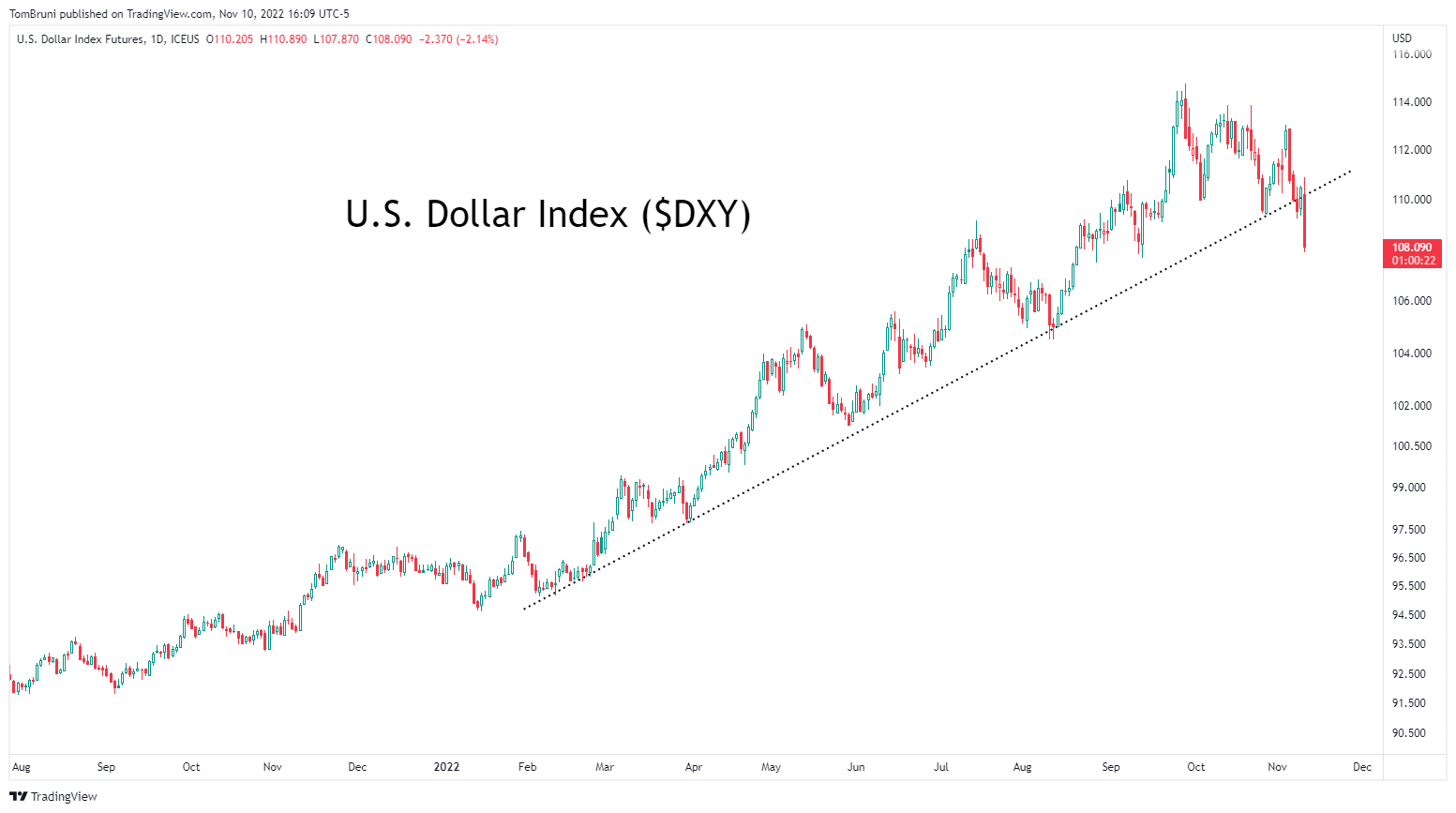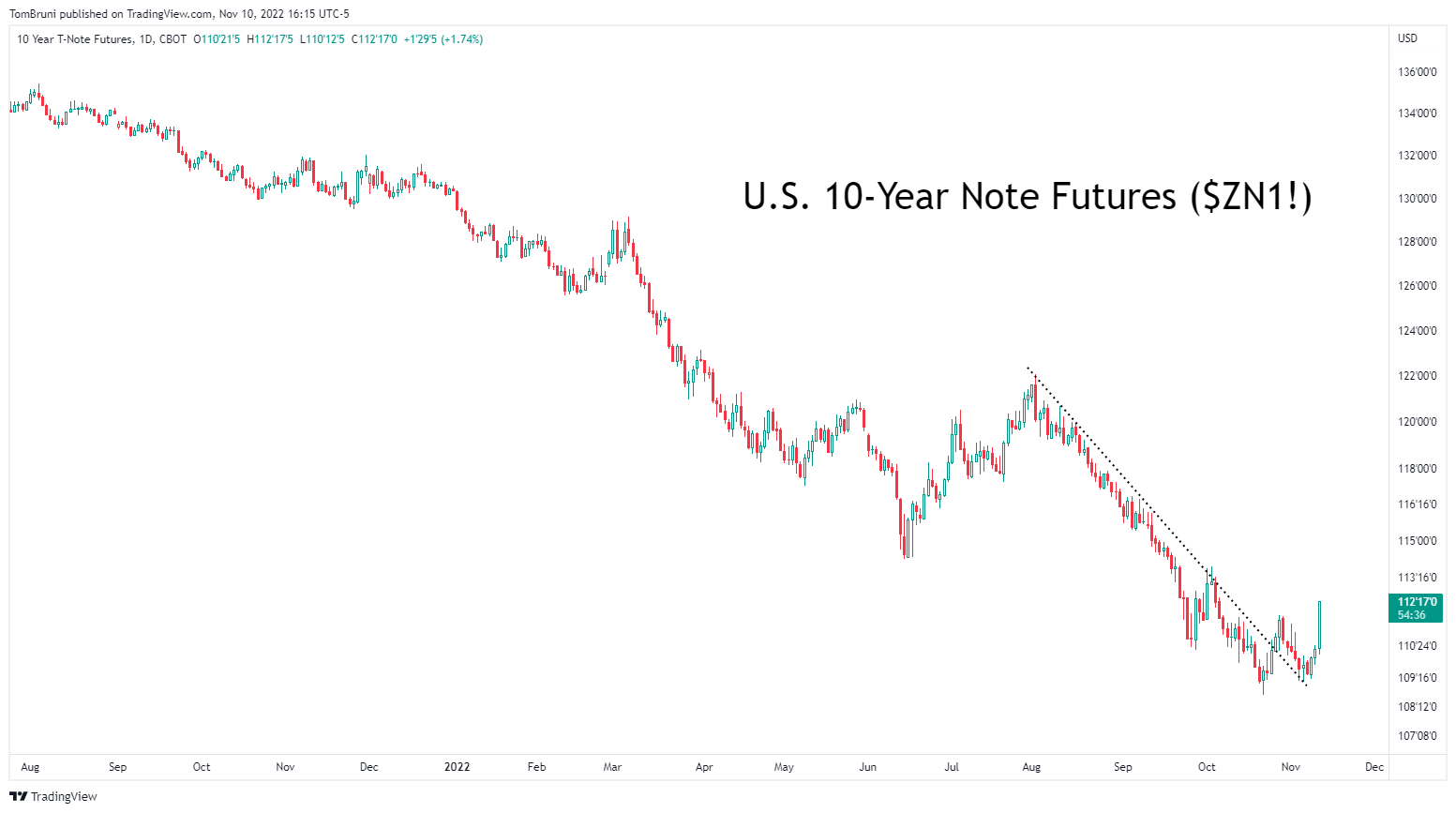The U.S. Dollar has served as a safe-haven asset for the last year, so investors have been watching it carefully. In early October, we discussed how technical analysts viewed the Dollar’s uptrend and what they were watching to indicate that its trend might be changing.
Many traders are taking today’s action as confirmation that the longer-term trend has shifted from up to at least sideways. The first reason is that prices broke an uptrend line from February lows, indicating a change in the rate of trend. And the second reason is that prices made their first series of lower highs and lower lows.

The other significant headwind for the market has been falling bonds (aka rising treasury yields). But, similar to the U.S. Dollar, 10-year treasury note futures show signs of a potential trend change. First, prices broke through a trendline from their August highs. And secondly, they made their first higher low and higher high.

Long-term trends don’t reverse overnight. Even the improvements we’ve noted above played out over the last month and are just now beginning to make directional progress. ⏱️
But what bullish analysts and traders say is most important is that treasury yields and the U.S. Dollar are no longer marching higher daily. They point to today’s action as evidence that even a little bit of stabilization in these assets gives risk assets enough fuel to rally.
Meanwhile, bearish analysts and traders say this is nothing more than poor positioning into this morning’s CPI news being unraveled. And that once the shorts are done being squeezed, each asset class will resume its primary trend.
Who is ultimately right remains to be seen. But at the very least, it’s worth keeping an eye on these potential trend changes as we head into year-end. 📆
